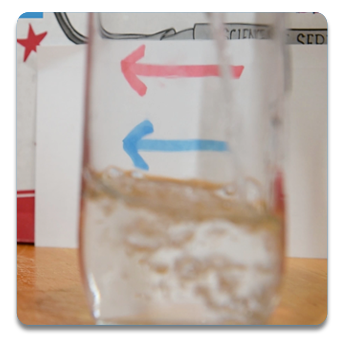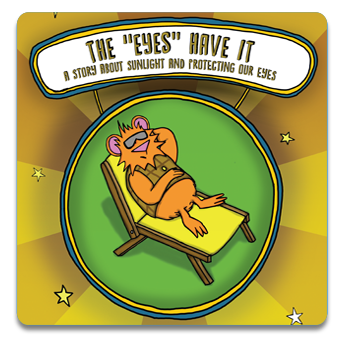Introduction
Is this magic or are your eyes playing tricks on you?
Objectives
To see how, when light passes from one material to another, it can bend or refract
Materials
Procedure
Take the piece of paper and make two arrows on it with the markers. They should both be pointing the same direction and be on the page, horizontally, one right under the other one, approximately two inches apart. Place the empty glass in front of the propped-up paper, about six inches away. You will see the arrows, pointing in the same direction, through the clear glass. Now pour water into the glass—enough to cover the first arrow, but not the second. What happens?
Conclusion
It looks like the arrow reverses itself! When light passes from one material to another, it will bend or refract. In this activity, light traveled from the air, through the glass, through the water, through the back of the glass, and then back through the air, before hitting the arrow. Think about the glass of water as if it is a magnifying glass. When light goes through a magnifying glass the light bends toward the center. Where the light all comes together is called the focal point, but beyond the focal point the image appears to reverse because the light rays that were bent pass each other and the light that was on the right side is now on the left and the left on the right, which makes the arrow appear to be reversed. Our eyes refract light. Refractive errors are optical imperfections that prevent the eye from properly focusing light, causing blurred vision. The primary refractive errors are nearsightedness, farsightedness, and astigmatism. Refractive errors usually can be "corrected" with eyeglasses or contact lenses.

